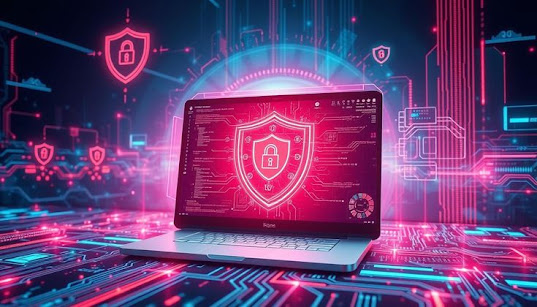AI in Cybersecurity: Guard or Threat? 2025 Full Guide
AI in Cybersecurity: Guard or Threat?
Introduction: The Dual Nature of AI in 2025
Artificial Intelligence (AI) is reshaping cybersecurity—not just as a shield but also as a sword. As defenders adopt AI to detect and respond to threats in real-time, attackers are equally using it to launch smarter, faster, and more targeted cyberattacks.
In 2025, the battle between cybersecurity experts and cybercriminals is largely an AI-powered arms race. This blog delves into how AI is being used both as a guardian of networks and a weapon in the hands of attackers, along with its implications, challenges, and future directions.
1. How AI is Strengthening Cybersecurity
Organizations are investing heavily in AI to build a strong cyber defense system. Here’s how AI is transforming security in 2025:
- Real-time threat detection: AI models process vast amounts of data and detect unusual patterns within milliseconds.
- Automated incident response: AI systems can isolate compromised devices or block malicious traffic without human intervention.
- Behavioral analytics: AI can monitor user behavior and detect deviations that indicate insider threats or account compromises.
- Threat intelligence fusion: AI gathers and correlates threat data from multiple sources to provide a holistic view.
Security Information and Event Management (SIEM) systems are now powered by machine learning to reduce false positives and speed up mitigation.
2. How Hackers Use AI for Advanced Attacks
Cybercriminals are no longer amateurs—they’re leveraging AI to scale their operations. Here’s how:
- AI-generated phishing emails: Attackers use NLP models to craft highly convincing phishing messages personalized to targets.
- Deepfake technology: Voice and video deepfakes are used to impersonate CEOs and steal money or data.
- Malware optimization: AI tools help in automatically modifying malware code to evade detection.
- Network reconnaissance: AI bots scan networks and identify vulnerabilities faster than human hackers.
AI gives attackers the power to scale personalized attacks across thousands of targets simultaneously—making defenses harder than ever.
3. Generative AI: A Double-Edged Sword
Generative AI tools like large language models (LLMs) have taken both cybersecurity and cybercrime to new heights. In 2025, we see:
- Fake content creation: Social engineering is now supported by fake blogs, news, and user comments generated by AI.
- Clone attacks: Generative AI replicates writing or speaking style to bypass identity verification.
- Security deception: AI-generated documents trick humans and even automated tools by mimicking legitimate files.
Cybercriminals use AI to erode trust in digital communication, making it harder for users to distinguish real from fake.
4. Real-World Case Studies
Case 1: AI Blocking a Zero-Day Exploit
A leading cloud security provider used AI-based anomaly detection to block a zero-day exploit before it spread. The AI recognized a traffic anomaly and auto-isolated the server.
Case 2: Deepfake Voice Scam in the Banking Sector
In Europe, a bank executive’s voice was cloned using AI to request a fraudulent transfer. The system passed verification, costing the bank over $300,000.
Case 3: AI-Enhanced Phishing Campaigns
AI tools generated emails with regional language and behavioral targeting, resulting in a 68% higher click-through rate than traditional phishing.
5. Ethical and Regulatory Dilemmas
As AI grows in capability, so does its potential for misuse. Ethical and legal concerns include:
- Bias in security algorithms: AI might ignore or misinterpret threats due to biased training data.
- Accountability issues: Who is responsible when AI makes the wrong call?
- Lack of regulation: International laws are still evolving to address AI misuse in cybersecurity.
Without proper checks, AI could become an uncontrollable force in both protecting and harming users online.
6. Future Directions: Will AI Collaborate or Compete?
Experts believe that the AI war will intensify. However, hope lies in:
- Collaborative AI: Cybersecurity firms and governments collaborating on threat intelligence sharing via AI systems.
- Explainable AI (XAI): Making AI decisions transparent to reduce risk of misjudgments.
- Federated Learning: A privacy-preserving AI approach where data never leaves the device.
The goal is to ensure AI aligns with human values while defending against AI-enhanced threats.
Conclusion: A Tool That Reflects Its User
AI is neither good nor bad—it is a tool. Its impact in cybersecurity depends on how it's wielded.
If used ethically, AI can be our strongest digital guardian. But in the wrong hands, it becomes the most powerful weapon in a hacker’s toolkit.
Moving forward, the cybersecurity industry must focus not only on technology but also on policies, education, and collaboration to tip the balance in favor of protection over destruction.




Comments
Post a Comment